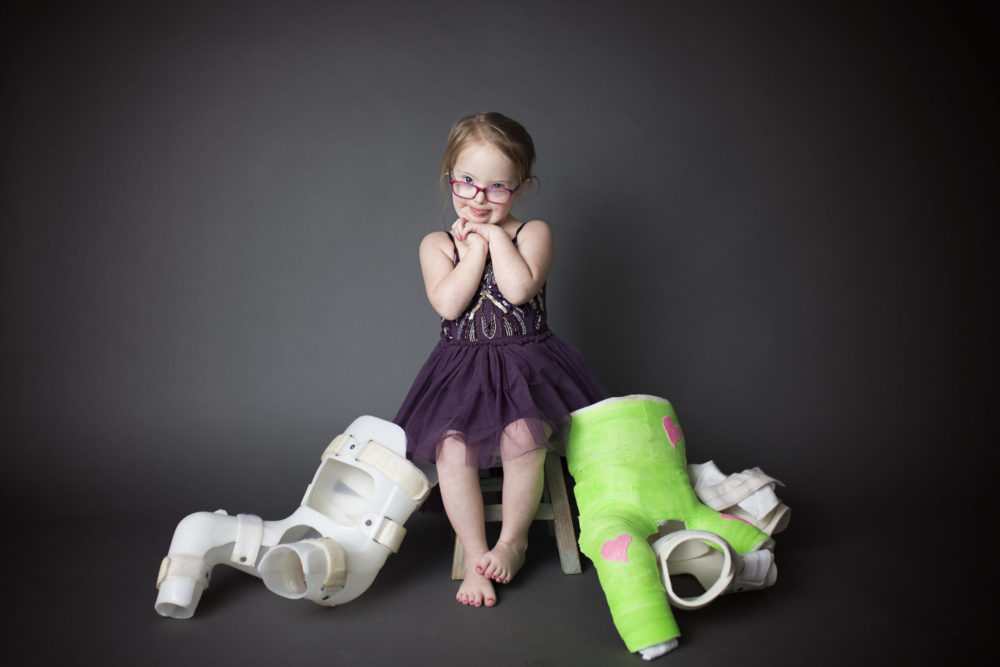At 3 years old, Sarah Davis was a typically rambunctious child.
But one day when she leaped onto the family sofa and plopped into her favorite position, the maneuver resulted in a piercing pain that struck without warning.
“We didn’t know what was wrong, we just knew she was in a lot of pain,” says Ashley Davis of Cumming, Sarah’s mother.
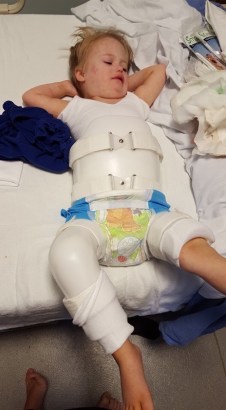
The girl’s parents initially took her to an urgent care facility, which is part of Children’s Healthcare of Atlanta. That’s where the Davises learned that Sarah had dislocated her right hip.
They were told to go directly to Scottish Rite Hospital. Sarah would need to be fitted for a spica — a large and unusually cumbersome half-body cast. That’s something that usually needs to be done in a hospital setting.
Being stuck in a spica cast is taxing for anyone, and it’s an ordeal for a 3-year-old. It took six long weeks before the little girl regained her freedom of movement.
Unfortunately, that freedom lasted only three days. Sarah dislocated her hip again.
The Down syndrome factor
Sarah was born with Down syndrome, and that’s no coincidence as far as her hip problems are concerned.
Down syndrome occurs in about one of every 700 births. It’s a chromosomal condition that can change the development of a child’s body and brain, causing physical and mental challenges.
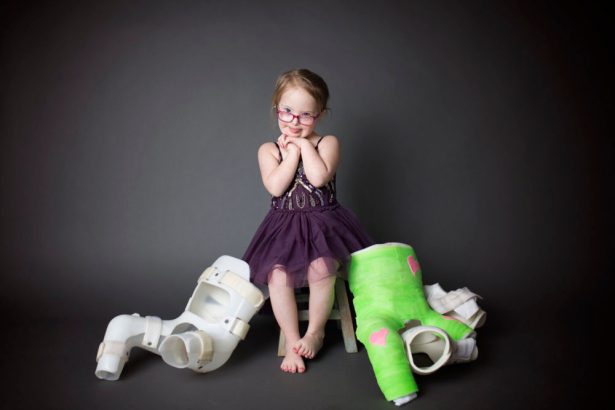
While most people are aware of Down syndrome, many are not aware of its potential effects on a child’s hips. At the time of Sarah’s first dislocation, her own parents didn’t realize the connection, even though they had been dealing with health problems the syndrome can create..
“While a hip dislocation can happen in any child, it is more likely to happen in children with Down syndrome due to their anatomy,” says Sarah’s orthopedic surgeon, Dr. Dana Olszewski of Children’s Healthcare of Atlanta, known as “Dr. O” by many of her patients.
“1 to 7 percent of children with Down syndrome will have hip instability,” says Olszewski. And their other joints, such as knees, also may slip out of place or become dislocated, according to the American Academy of Orthopaedic Surgeons.
It’s tougher when you’re a kid
Following important medical instructions is difficult for any young child, but it proved especially hard for Sarah, who was nonverbal at the time of the first hip accident.
Sarah’s mother says that by nature, the little girl is “happy” and “fearless.” And also headstrong.
“Sarah has a fiercely independent personality, even to a fault. She doesn’t like your help [or advice], because she’s going do it herself even if she hurts herself in the process.”
That personality trait became clear after Sarah’s first hip dislocation. “I didn’t want her sitting in a ‘W’ position” after that, says Dr. Olszewski. The ‘W’ is a popular position with toddlers — feet bent backward and underneath the child. Sarah liked that position, which was what originally caused her hip to pop out, says the doctor.
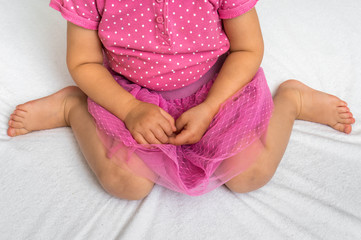
That first accident “was a traumatic injury for Sara,” says Olszewski. The girl’s pain and distress were obvious when she was brought into the hospital. “Once Sarah was placed into a cast, that held her in position, things got better.”
“However, when she finally came out of the first cast, she went back and did the exact same thing.” Within days, Sarah had jumped onto the family sofa again and resumed the “W” position. And the result was the same the second time around.
Dr. O says that what Sarah did is “not unusual for any toddler.” But the second dislocated hip was devastating for the child and her parents. It was going to be a long road ahead.
Olszewski launched a new specialized plan for Sarah, keeping the youngster’s low muscle tone in mind. The plan included surgery to redirect the hip socket, putting the girl into a full-body cast, and finally ordering a special “rhino” brace for Sarah. A rhino brace helps keep a hip in place while it heals.
A tailored solution
“I try and take each patient as an individual,” says Olszewski, who notes that not all people with Down syndrome or hip disorders need the same treatment strategy. But she adds that “Sarah was unique.”
“We had to think outside the box for this little girl.”
The surgery took place in July 2016. That December, Sarah was transitioned into the rhino brace, and screws from the surgery were removed.
Occasionally, Sarah still forgets and sits in the W position, but when she’s reminded, she changes her position right away.
Photos of Sarah once she was brace-free show an undeniably happy child. “You could just see the light in her face, she was coming back to herself” after the cast was gone, recalls her mom.
“She was giddy, it was amazing to watch her,” says Dr. O.
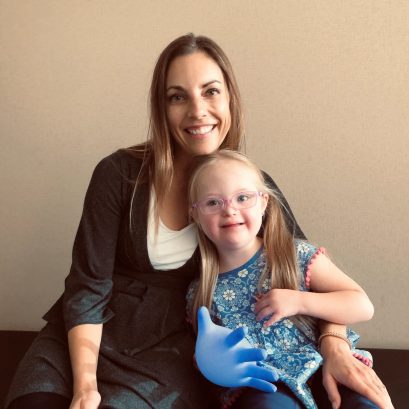
The girl’s time in a body cast was tough on her and her family. While she wore the full-body spica, “it was like she became a shell of herself at home,” her mother says. But she snapped back quickly once it was off.
“A lot of people play into Sarah’s recovery,” says Olszewski, “especially the family.”
“It’s easy enough for me to order a brace, but ultimately the family has to be supportive with it at home,” says Olszewski. “They are the crucial element in all of this.”
When a child is crying or complaining, some parents will take the brace off, thinking that’s the reason for the tears, says Olszewski. “And then things will fall apart.” She gives credit to the Davis family for seeing things through to a successful conclusion.
Today, Sarah’s difficult days are behind her, but her condition is being monitored. “Sarah’s still very active, but will likely have to continue receiving care throughout the years to prevent dislocations and keep her hip healthy,” says her mom.
“She’s a climber, she moves and runs and plays and has no mobility issues at all,” says Olszewski.
Judi Kanne, a registered nurse and freelance writer, combines her nursing and journalism backgrounds to write about public health. She lives in Atlanta.

